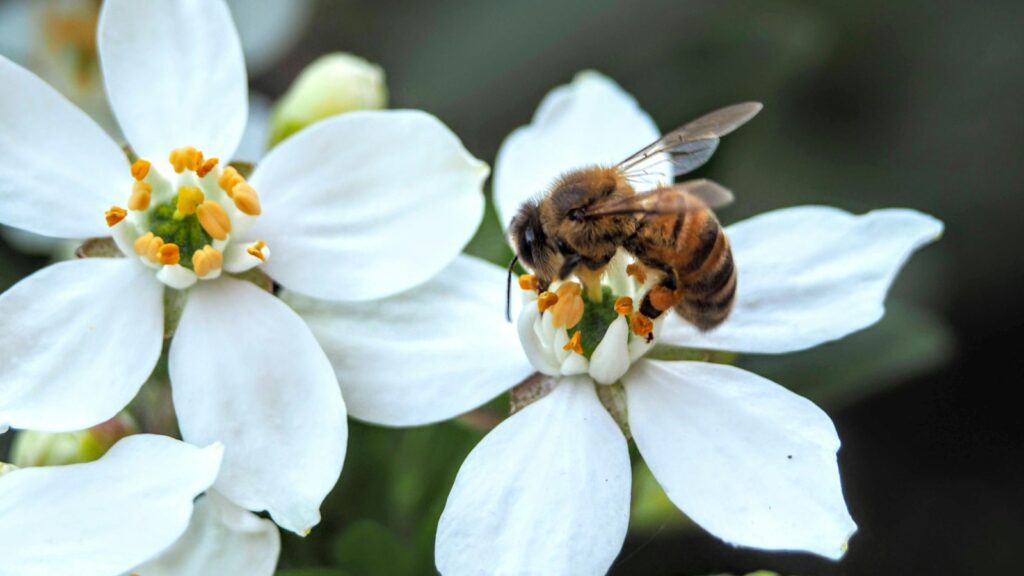
Deep within the buzzing confines of a honeybee colony lies a sophisticated democratic process that rivals human political systems in both efficiency and fairness. When faced with life-altering decisions, such as selecting a new home, honeybees don’t rely on a single leader but instead engage in a remarkable collective decision-making process that scientists call “swarm intelligence.” This fascinating behavior, refined over millions of years of evolution, demonstrates how thousands of individual bees work together to reach consensus through a form of voting that ensures the colony’s survival. Understanding how these tiny insects debate, persuade, and ultimately reach agreement not only illuminates the complex social structure of bee colonies but also offers potential insights for human decision-making systems. Let’s explore the remarkable democratic process that unfolds when honeybees cast their votes.
The Democracy of the Hive

Honeybee colonies represent one of nature’s most successful democratic systems, operating through collective intelligence rather than hierarchical authority. While the queen bee serves as the reproductive center of the hive, she doesn’t direct decision-making or dictate where the colony should move. Instead, major decisions fall to the worker bees, particularly a specialized group of older, more experienced foragers who temporarily become “scout bees” during critical decision periods. This distributed leadership model ensures that decisions incorporate diverse perspectives from hundreds of individuals, each contributing their own assessment to the collective wisdom. The resulting decisions typically prove superior to those any single bee could make, demonstrating a natural form of wisdom of the crowds that has evolved over millions of years.
The Swarm Imperative: When Bees Need to Decide

The most dramatic example of bee democracy occurs during the process of colony reproduction known as swarming. When a colony grows too large for its current home, it divides in a process where approximately two-thirds of the worker bees and the old queen leave to establish a new colony. This departing swarm first gathers on a temporary location—often a tree branch—forming a hanging cluster while scout bees search for potential permanent homes. This transitional period creates tremendous urgency, as the exposed swarm remains vulnerable to weather and predators, with limited food stores. The colony faces significant pressure to make a good decision quickly, as choosing an inadequate new home could doom the entire swarm to failure. This high-stakes scenario has driven the evolution of their remarkable decision-making process.
The Scout Bees: Democracy’s Representatives
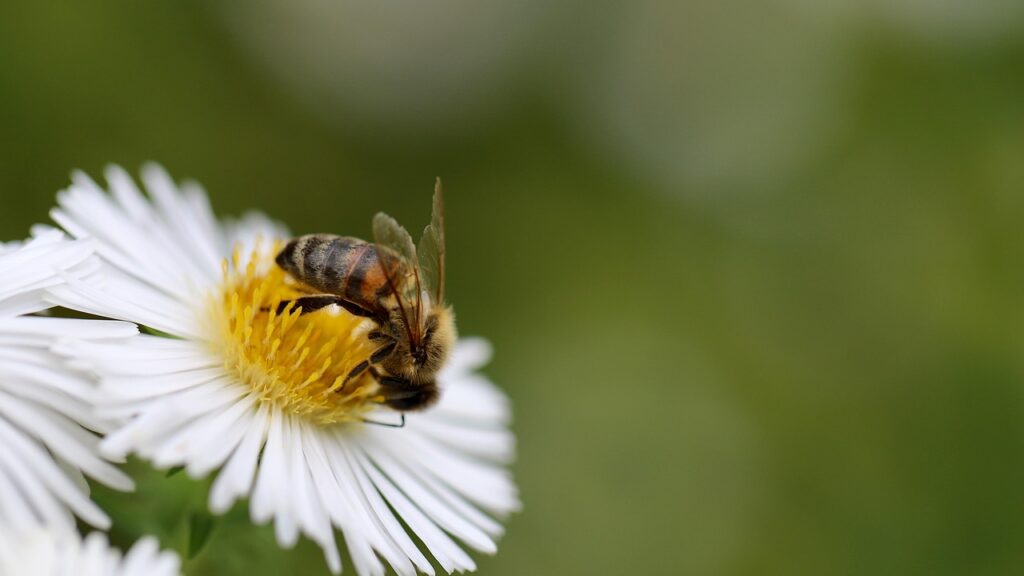
The democratic process begins with scout bees, who function essentially as the colony’s search committee for new real estate. These scouts, typically comprising about 5% of the swarm population, venture out in all directions to locate and evaluate potential nest sites within a radius of several miles. Each scout independently assesses candidate locations—typically tree cavities or similar protected spaces—against multiple criteria, including volume, entrance size, height above ground, and protection from elements. Upon discovering a potential site, a scout conducts a thorough inspection, measuring the cavity by walking through it and assessing its suitability according to a sophisticated mental checklist. This independent evaluation ensures that diverse options receive consideration before any group consensus begins to form.
The Honeybee Ballot: The Waggle Dance as Voting Mechanism

When a scout bee discovers a promising site, she returns to the swarm to cast her “vote” through one of nature’s most sophisticated communication systems: the waggle dance. This remarkable dance serves as both a vote and an advertisement, communicating both the location and the scout’s enthusiasm for her discovered site. The dance follows a figure-eight pattern, with the middle straight run indicating both distance and direction to the site—the angle of this run relative to vertical corresponds to the angle of the flight path relative to the sun. Most significantly, the duration and vigor of her dance directly correlate to her assessment of the site’s quality, with better sites receiving longer, more enthusiastic dances. Through this mechanism, each scout effectively casts a weighted vote proportional to her conviction about her candidate site.
Building Consensus Through Dance Dialogue

The swarm’s decision-making process doesn’t end with initial dancing but evolves through multiple rounds of evaluation and persuasion. After performing her dance, a scout typically returns to recheck her discovered site, which provides an important verification mechanism against initial assessment errors. Upon each return to the swarm, the scout may again dance to promote her site, but a fascinating pattern emerges: scouts advocating for high-quality sites maintain their enthusiasm for longer periods, continuing to dance through multiple cycles. Meanwhile, scouts who found mediocre locations gradually reduced their dancing and eventually stopped advocating for their sites. This natural attrition of enthusiasm for lesser options represents a sophisticated form of preference aggregation that allows the swarm to gradually focus attention on the most promising candidates.
The Quorum Sensing Mechanism

Unlike human elections that might end with a simple majority, honeybees employ a more sophisticated consensus-building process that researchers call “quorum sensing.” As the dance dialogue continues, scout bees begin to be persuaded by the dances of others, visiting sites promoted by their nestmates rather than remaining loyal to their original discoveries. When multiple scouts begin to converge on a single high-quality option, the colony approaches a decision point. Researchers have determined that bees use a quorum threshold of approximately 30-40 scouts present at a single site to trigger the final decision. This quorum doesn’t represent a mere majority but indicates that sufficient independent verification of the site’s quality has occurred through multiple separate assessments. This consensus-building approach minimizes the risk of premature or poor decisions based on limited information.
The Piping Signal: Announcing the Decision
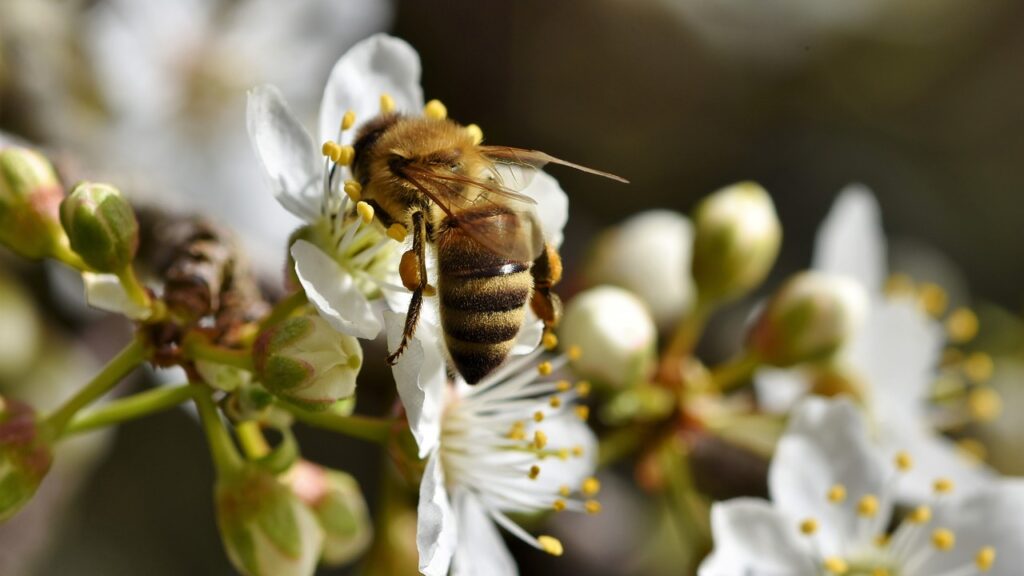
Once a quorum has been reached at a selected site, the colony enters the implementation phase of its democratic process through a remarkable signaling behavior. Scout bees who have participated in the quorum begin producing a distinctive sound called the “piping signal” by pressing their thoraxes against other bees while vibrating their wing muscles. This high-pitched signal, which gradually spreads through the swarm, serves as an announcement that a decision has been reached and preparation for flight should begin. The piping scouts essentially run through the cluster, pipe-signaling worker bees to warm their flight muscles to the 35°C (95°F) temperature necessary for sustained flight. This preparation phase typically lasts for about an hour as the signal spreads and more bees reach flight temperature, demonstrating how the colony coordinates not just the decision but also its implementation.
The Buzzing Run: Mobilizing the Masses
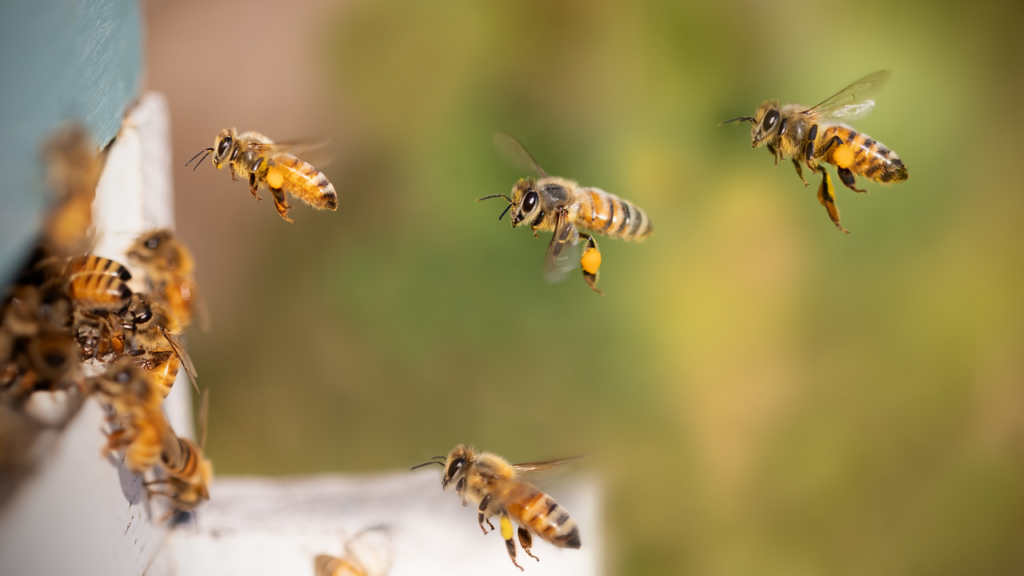
The final stage of the democratic process involves transforming the swarm from a stationary cluster into a unified flying entity directed toward its new home. Once sufficient bees have warmed their flight muscles following the piping signal, scout bees initiate what researchers call the “buzzing run.” In this behavior, scouts push through the cluster while buzzing their wings and running in short bursts, essentially creating a physical signal that it’s time to take flight. This vigorous physical stimulation causes the entire swarm to break cluster and take to the air within a matter of seconds. The mobilization of thousands of bees simultaneously represents a remarkable coordination feat, transforming a democratic decision into collective action. Once airborne, the swarm follows scout bees who know the location of the chosen site, often traveling considerable distances to their new home.
Accuracy and Efficiency of Bee Democracy
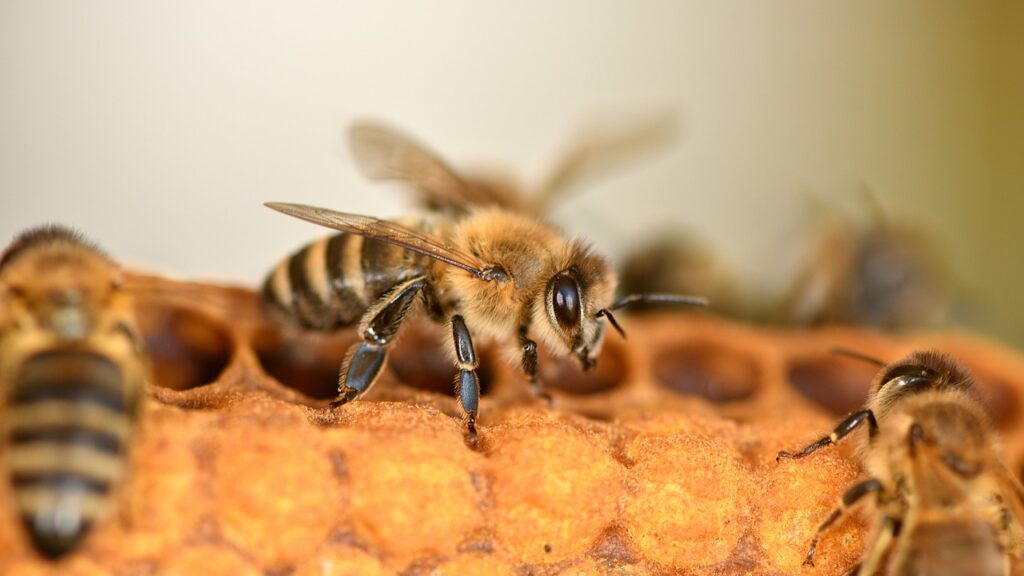
The effectiveness of honeybee democracy is remarkable by any standard, with studies showing that colonies select the optimal available site approximately 80% of the time. This high success rate emerges despite no individual bee having complete information about all available options. Equally impressive is the speed-accuracy balance the process achieves—most decisions are reached within 3-4 days, representing an optimal trade-off between thorough evaluation and the urgent need to relocate. The process also scales efficiently with colony size; larger swarms with more scout bees can evaluate more sites simultaneously without becoming bogged down in decision paralysis. Researchers have calculated that the bee decision-making system achieves near-optimal performance when balancing the competing demands of decision quality, speed, and group cohesion.
When Democracy Fails: Split Decisions and Conflict Resolution

While honeybee democracy typically produces unified decisions, the system occasionally confronts deadlocks when scout bees remain divided between two equally attractive sites. In these rare situations, the swarm may actually split, with portions following different scout groups to different locations—a potentially catastrophic outcome that can doom both resulting colonies due to insufficient population. More commonly, however, bees resolve potential impasses through the natural attrition of dance enthusiasm, where scouts eventually abandon less popular sites through a process researchers call “decentralized inhibition.” This self-correcting mechanism helps prevent permanent deadlocks by ensuring that even balanced competitions eventually tip toward one option as individual bees gradually align their support. This natural conflict resolution mechanism demonstrates how evolution has refined the process to minimize the most dangerous decision-making failure modes.
Lessons from Bee Democracy for Human Systems

The study of honeybee decision-making offers intriguing parallels and potential lessons for human collective decision processes. Unlike human systems, often hampered by status hierarchies, information hoarding, or inflexible positions, bee democracy demonstrates the power of independent evaluation followed by open advocacy and flexible alignment. Organizational psychologists have begun adapting principles from bee decision-making into human contexts, particularly the concept of having individuals independently evaluate options before group discussion to prevent groupthink. The bees’ use of a quorum threshold rather than simple majority voting also provides insights for designing human consensus processes that balance efficiency with decision quality. Perhaps most importantly, the bee system illustrates how effective democracy requires both vigorous advocacy and the willingness to change position when presented with compelling alternatives.
Scientific Discoveries and Research Methods

Our understanding of honeybee democracy stems from ingenious research methodologies developed over decades of careful observation. The pioneering work of Martin Lindauer in the 1950s first documented the basic democratic process, while later scientists like Thomas Seeley refined our understanding through sophisticated experiments. Modern research employs remarkable techniques, including harmless paint marking of individual bees, video tracking systems that follow thousands of bees simultaneously, and even robotic bees that can perform programmed waggle dances to test how colonies respond to specific signals. Some experiments have involved creating artificial choice situations with controlled nest-site options to precisely measure how bees weigh different habitat factors. This research continues today, with scientists still discovering new subtleties in the collective intelligence that emerges from the swarm’s democratic process.
Conclusion: The Wisdom of the Swarm
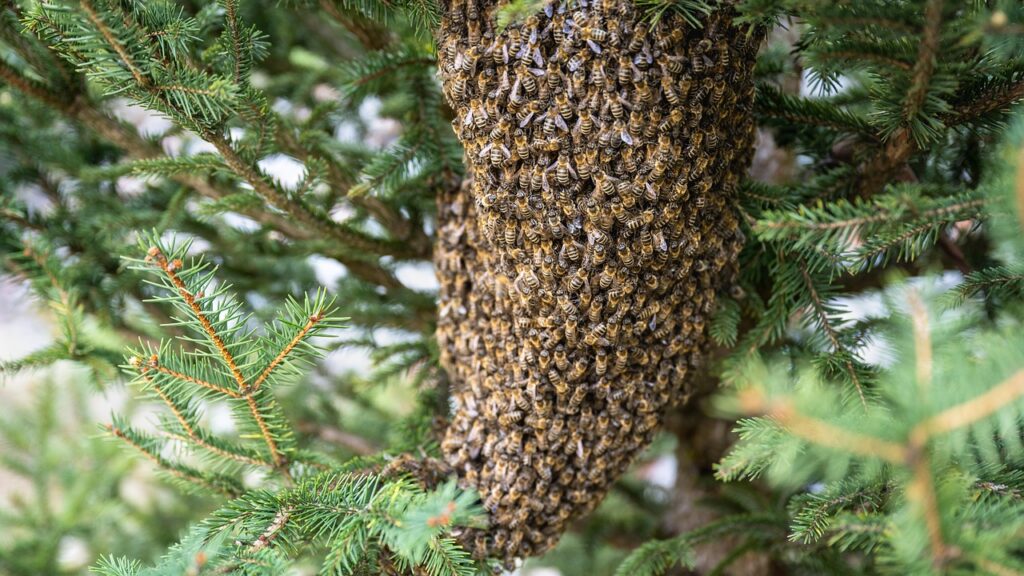
The democratic process of honeybees represents one of nature’s most sophisticated examples of collective intelligence, where thousands of relatively simple individuals produce group decisions that consistently outperform what any single bee could achieve. Through a remarkable system of independent search, honest advertisement, progressive persuasion, and flexible consensus-building, honeybees have evolved a decision-making process that reliably identifies optimal solutions to complex problems. This system, refined over millions of years of natural selection, achieves an elegant balance between thorough evaluation and decisive action. As we face increasingly complex societal challenges requiring coordinated responses, the humble honeybee offers not just a fascinating biological curiosity but potentially valuable insights into how collective wisdom can emerge from properly structured group processes. In the democratic buzzing of the hive, we may find inspiration for improving our own approaches to collective decision-making.
